🇪🇺💉
A green-light to begin vaccinating children five to eleven years old across Europe could come by as early as next week. In a press conference Thursday, the European Medicines Agency said a decision on the Pfizer application to extend use of its vaccine to children “is possible by the end of next week.”
EMA Vaccine Strategy Head Marco Cavaleri:
“The processing of the application is progressing and we are ahead of schedule. We expect to have an answer ready later this month or perhaps as early as the end of next week.”
Countries across Europe will be watching for the decision as coronavirus infections race through children under the age of 12 who cannot yet be vaccinated. In Denmark, the Staten Serum Institut has noted that infection incidence rates by age are highest among those six to eleven years old.
🇩🇰
For the first time since December 18 of last year, and for the 3rd time ever in the pandemic, Denmark has reported more than 4,000 COVID cases over a single 24 hour period. Today, it registered 4,013 infections and six more coronavirus deaths.
There were 310,459 total corona tests yesterday, of which 174,423 were PCR tests, which equals a positivity percentage of 2.95%.
-
There are now 48 Danish kommunes with a COVID incident rate of 400 or higher per 100,000 residents. The municipalities of Fanø and Herlev both now have incidence rates in excess of 1,000.
-
At least one Danish expert is pointing to the COVID numbers as proof positive that the epidemic is far from under control.
Aarhus University Professor Emeritus of Infectious Diseases Eskild Petersen spoke to Jyllands Posten;
“The epidemic is still evolving and we still have no control over it. After all, we have started control measures relatively late in this wave. It was not until Friday last week that a coronapas was introduced as the only control measure.”
Petersen is expecting COVID numbers to keep rising, with the impact on Denmark’s hospitals coming a week or two after the numbers spike. While hospital admissions have ease very slightly in the last two days, overall numbers have more than tripled in the last month.
-
COVID hospitalizations (362) have dropped slightly (-7) while the number of infected people in an ICU (50) crept upward (+3) and of those the number on a ventilator (26) also inched up (+2).
-
New hospital admissions in the last seven days by age per 100,000 people are dominated by unvaccinated people for all age groups except those 65 years old and older. Among seniors hospital admissions are higher for those who are partially vaccinated than those who are not, while hospitalizations are lowest for those with both doses.
-
On the vaccination front 1st doses administered remains above 4,000, which is positive. There were 30,632 total inoculations yesterday, most of which were booster shots.
To date, 77.2% of the total population has had one dose, 75.5% have had two, and 9% have had a booster shot.
-
The massive RS virus wave, which arrived much earlier and in numbers much higher than ever before, continues to decline. Last week there were 88 hospitalizations due to the respiratory bug, which is the first time in many weeks hospital admissions have been fewer than 100.
-
Region Nordjylland has opened up five more COVID rapid testing sites. They are in Aalborg East, Fjerritslev, Hirtshals, Farsø, and Hurup. A sixth in Nykøbing Mors is moving to a new address and will open at the new location for more days of the week. All the new rapid testing sites will open for business next week except for Aalborg East, which opens on Friday.
🇸🇪
Sweden has added 1,220 infections and two more corona deaths since yesterday’s update.
COVID vaccinations:
Population 16 years old and older - 85.3% have a first vaccine dose and 81.8% have had both shots.
12 to 15 year olds - 43.5% have been inoculated.
Booster doses
People aged 65 to 78 year old - 232,322 inoculations (26%)
People 80 years old and older - 338,290 booster vaccinations (55%)
-
Sweden’s top epidemiologist is watching the huge COVID waves crashing over neighbouring countries with concern. So far Sweden seems to be dodging that bullet, but Anders Tegnell says they must prepare for the worst. As for why infections haven’t begun to rocket up in Sweden as they have in Finland, Norway, and Denmark Tegnell doesn’t have an answer.
“Hard to know. The delay between waves is much longer than it was last autumn; then we were a few weeks behind; now it is much longer than that. I really do not know. We have discussed whether there may be higher immunity in the population because we have had many more who were infected. But it is not really logical, because there has been at least as large an infection spread in, for example, Belgium. Immunity may play a role, but it is not clear yet how.”
Yesterday, the Swedish Public Health Agency asked the government to institute a vaccine passport system by December 1. Tegnell doesn’t seem to be a big fan. He was asked when a vaccine passport would be required for entry into places like restaurants and museums.
“We do not know how far away it is; we hope that we will not have to get there.”
Tegnell also downplayed any evidence that vaccine passports impact infection spread, saying “there aren’t a great many studies on it.”
-
In Sweden, data from the country’s National Board of Health and Welfare shows that unvaccinated people are at much higher risk of hospitalization due to a COVID infection. Admission rates per 100,000 people for those fully vaccinated were 5, compared to 15 for those who were not vaccinated.
Public Health Advisor Nilsson Carlsson:
“The differences are greater when it comes to those who need intensive care, so it is a good idea to get vaccinated.”
🇳🇴
Numbers in Norway continue to spiral upward as it added 3,529 infections and another 44 corona deaths since yesterday’s update.
COVID hospitalizations (218) dipped slightly (-1) while the number of infected people in an ICU (58) is unchanged, and of those the number on a ventilator (36) inched upward (+1).
To date, 78.37% of Norwegians 12 years old and older have had one vaccine dose and 70.22% have had two doses.
-
The latest weekly COVID assessment from the Norwegian Institute of Public Health warns that there were a record number of outbreaks in nursing homes and hospitals, with 22 last week. Norway is struggling with an infection wave that is sending numbers up to record highs. The NIPH says it is also seeing “a clear increase” in COVID deaths, with 38 last week compared to 31 the week before. The median age of COVID fatalities in the last four weeks in Norway is 82 years old.
Infection Control Department Director Line Vold:
“Among the oldest, the situation is more serious than it has ever been during 2021. There is every reason to follow this development with great vigilance.”
In the last four weeks, the agency says, hospital admissions have also increased. There were 158 coronavirus hospitalizations last week, an increase from the 144 the week before. The NIPH notes “the figures for the last week are expected to be adjusted upwards.” Over the last five weeks, the number of COVID patients 65 years old and older has increased.
“The most important thing people can do now is to get vaccinated, both for those who have not yet been vaccinated and those who are now being offered a third dose. It is very important that everyone stays at home when they get sick, especially with respiratory infections. And it is important that everyone in a household get tested as soon as one member of the family has a positive test or is considered a close contact.”
🇫🇮
Finland has reported a record high 1,259 new COVID cases and 10 more virus deaths in the last 24 hours.
COVID hospitalizations (299) are unchanged day to day.
So far, 75.9% of the total population have had one vaccine dose; 71.1% have had two, and 2.8% have had a booster shot.
The vaccination campaign is a game of inches in Finland as data from its national health institute show 1st dose vaccination coverage increased by 0.6% last week with 2nd doses creeping up by 0.2%. To date, 154,629 booster doses have been administered.
-
Finland continues to see an increasing epidemic as its latest weekly assessment from the Finnish Institute for Health shows 5,900 overall infections last week compared to 5,200 the week before. The national COVID incidence rate is also increasing, going from 142 per 100,000 residents in week 44 to an incidence rate of 199 in week 45. The positivity percentage is also on the rise. It was 6.2% last week and has been increasing each week since mid-October.
Finland has twice in the last week set new record highs for the most new daily infections seen yet in the pandemic.
Hospitalizations continued to increase, with 137 new admissions last week, the fifth straight week of rising hospitalization numbers. Intensive care numbers are also headed upward with 31 ICU admissions last week, an increase from 20 the week before.
-
As in other Nordic countries, Finland is seeing declining antibiotic usage. A new report from the Finnish Institute for Health says antibiotic use dropped by 19.3% last year, while across the European Union the decrease was 16.6%.
Researcher Katja Koukkari says the pandemic has had an impact due to social distancing, travel restrictions, and much more hand-washing.
“During the COVID pandemic, the decrease in hospital antibiotic consumption has been affected by, among other things, difficulties in accessing primary health care services, cancellations of non-emergency surgeries, and reduced hospital stays for patients with long-term illnesses.”
The institute says Finland has generally had higher rates of antibiotic use compared to its Nordic neighbours but that gap is now narrowing. In some specific cases, like the use of penicillin, Finland now has less usage than both Sweden and Norway.
There is an effort across the Scandinavian nations and the broader European Union to better monitor antibiotic use, identify overuse, and reduce consumption. This is to better guard against antibiotic resistance, which can cause serious complications and infections that are incredibly difficult to treat.
🇩🇪
Germany’s national health agency, the Robert Koch Institute, says the country has set another COVID record with 65,000 new infections in the last 24 hours. This marks the first time ever in the pandemic that daily infections have exceeded 60,000 in Germany.
According to DW News RKI head Lothar Wieler said the real infection numbers could actually be two or three times higher.
“The under-reporting of the numbers is increasing. We are in an emergency. Whoever refuses to see that is making a big mistake. We will really have a very bad Christmas if we don't take countermeasures now.”
Wieler also lashed out at policy makers who he believes have been sitting on their hands.
“It's simply no longer bearable that what I, and many other colleagues, have been saying for 21 months is perhaps still not being recognized."
-
Germany will tighten COVID restrictions with an aim at the unvaccinated. Chancellor Angela Merkel called the country’s epidemic situation “highly dramatic” coming out of a meeting with the head of the country’s 16 states. Regions exceeding hospitalizations of over three per 100,000 residents for seven days must restrict all cultural, sporting events, and other major gatherings to those who are vaccinated or who have had a recent infection. This would mean a recent negative test would no longer be an option.
If admission rates rise to six and then nine per 100,000, then additional restrictions will, e required. Germany will also tighten vaccination requirements for health and senior care staff.
If admission incidence rates reach six and nine, respectively, additional restrictions take effect.
In addition, the country will tighten vaccine requirements for hospital and nursing home staff. It is a little unclear at this point how far any such vaccination mandate will go or what teeth it may have.
-
Germany’s Standing Committee on Vaccination (STIKO) is recommending “with immediate effect” that everyone over the age of 18 get a booster dose. However, STIKO adds that priority groups like those who are immunocompromised, seniors, elderly people in care, and healthcare staff all get a third vaccine dose first.
The committee also mandates that regardless of the previous vaccine used, a booster dose must be an mRNA vaccine. The booster shot is to come six months after a second dose expect in “individual cases” where a shortened gap of five months is advised.
It also adds “those who have not yet been vaccinated should also be vaccinated as a matter of priority.”
In making the recommendation STIKO notes that the current infection wave driving daily infections to record highs is also “causing a worryingly high load on intensive care treatment capacities.”
🇪🇺💉🦠
The European Medicines Agency is warning that the number of unvaccinated people in intensive care units across Europe is rising in almost every EU country. It says many European countries have large numbers of unvaccinated people and COVID infections are exploding in those populations. The agency is encouraging people to keep up good hand washing habits, maintain social distancing, and wear a face mask indoors and in crowded places. To continue to improve protection, it is also urging people to get vaccinated.
In its weekly COVID press conference today, the European pharmaceutical watchdog said there are studies looking at whether the gap between a second and a third dose, which is currently six months, could be shortened. It expects a conclusion on those studies by month’s end.
The EMA says beginning Friday it will prepare advice for EU countries on the emergency use of a COVID treatment pill pioneered by Pfizer. This would help lay out best practices should countries begin using the pill on an emergency basis before a decision on a marketing authorization can be made.
🇨🇦
The Toronto Star and CBC are both reporting that Health Canada will announce on Friday an approval on extending the Pfizer vaccine for use among children five to 11 years old. The CBC, citing a source, is reporting that the government is already in negotiations with Pfizer to firm up delivery timelines for pediatric vaccine doses that, according to the source, will arrive in Canada within "days, not weeks."
-
Canada reported 2,440 infections while losing another 28 lives to the pandemic yesterday.
On the vaccination front, Canada has passed a vaccination milestone as first doses administered surpass 30-million, 30,001,537 to be exact, or 78.46% of the total population. So far, 28,742,230 2nd vaccine doses (75.17%) have also been administered along with 690,651 booster doses.
In Ontario there were 711 new infections, of which 397 were either not vaccinated or had a single dose. There are 278 in hospital with 206 of them with one dose or none at all. For the 129 people in an ICU that number is 112. Ontario announced today that is is expanding its testing program as cases rise. The changes include offering take home PCR tests at pharmacies and offering more testing, including for asymptomatic people, across the province.
Quebec reported 720 infections and two more fatalities on Thursday.
In Atlantic Canada, New Brunswick recorded 72 new infections. Nova Scotia had 22 new cases. Newfoundland and Labrador had four.
Manitoba hasn’t reported yet today, but it saw 162 infections and two more deaths on Wednesday.
There were in 95 new corona cases and four deaths Saskatchewan on Thursday.
Alberta logged 412 new coronavirus cases and three more deaths on Wednesday. There are 416 people in hospital, of which 71.9% are unvaccinated or have a single dose. Of the 100 in an ICU, that number is 84%.
B.C. registered 324 infections and seven deaths on Wednesday. There are 379 people in hospital and 109 in an ICU. 87% of people in intensive care are not vaccinated.




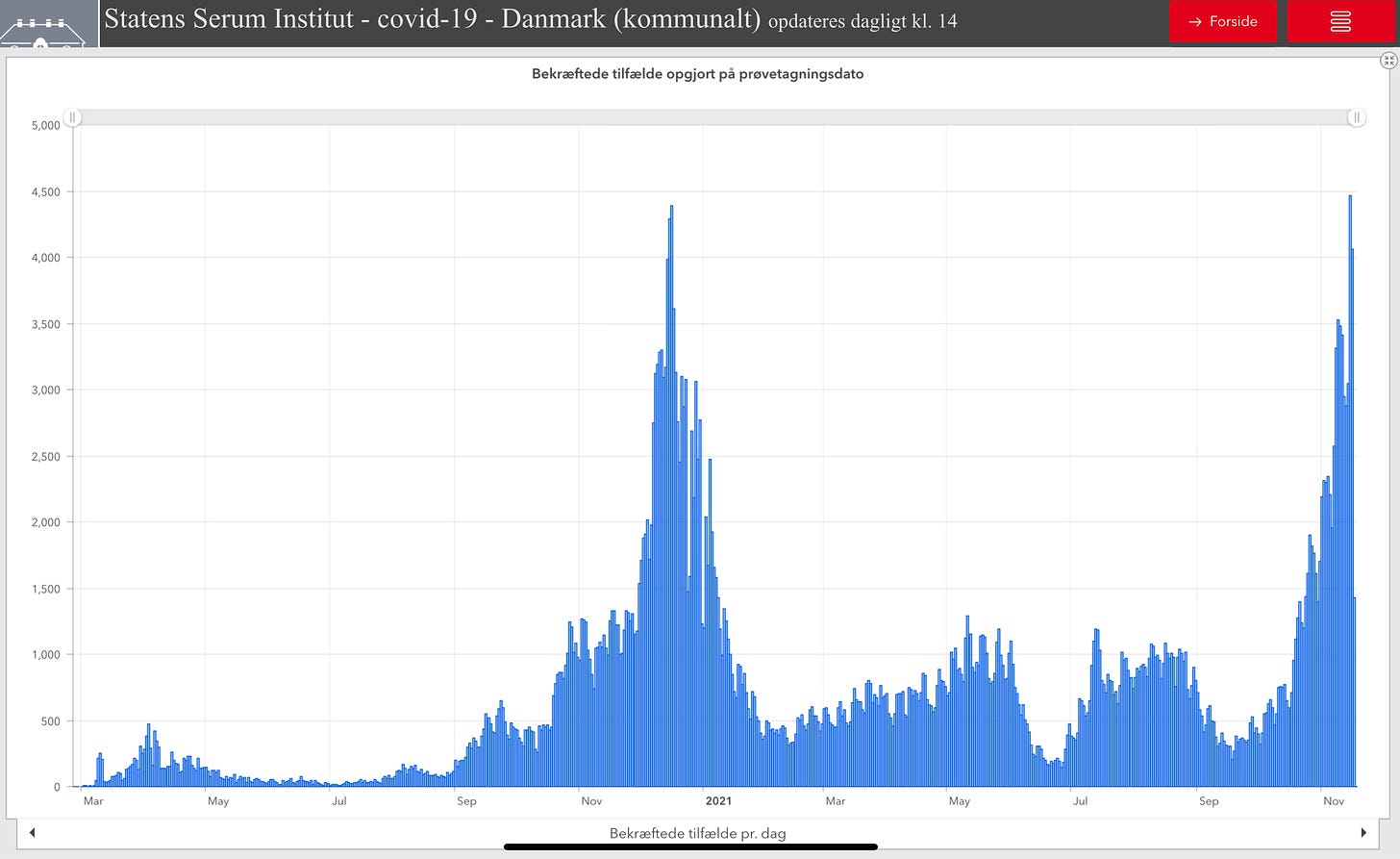
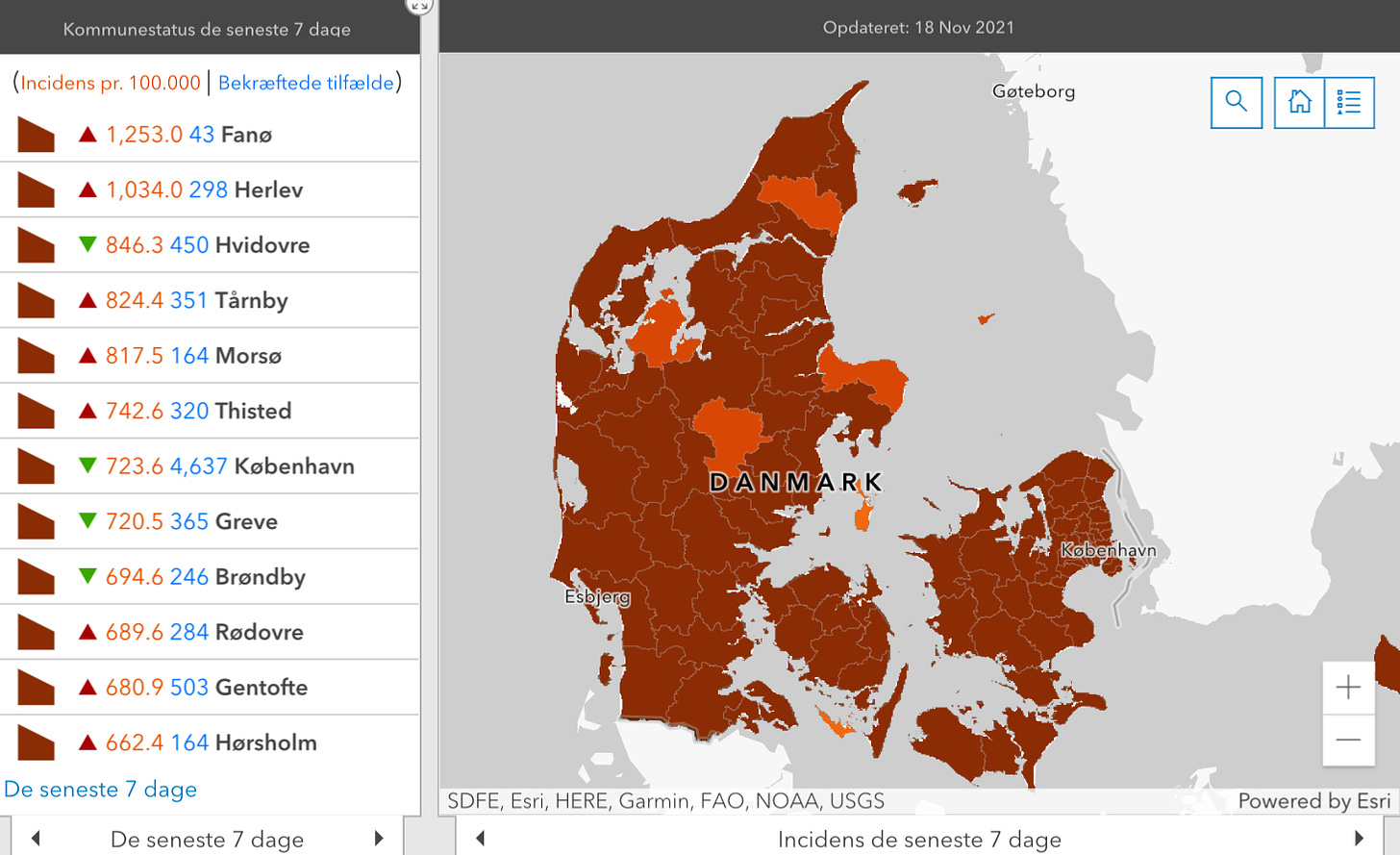
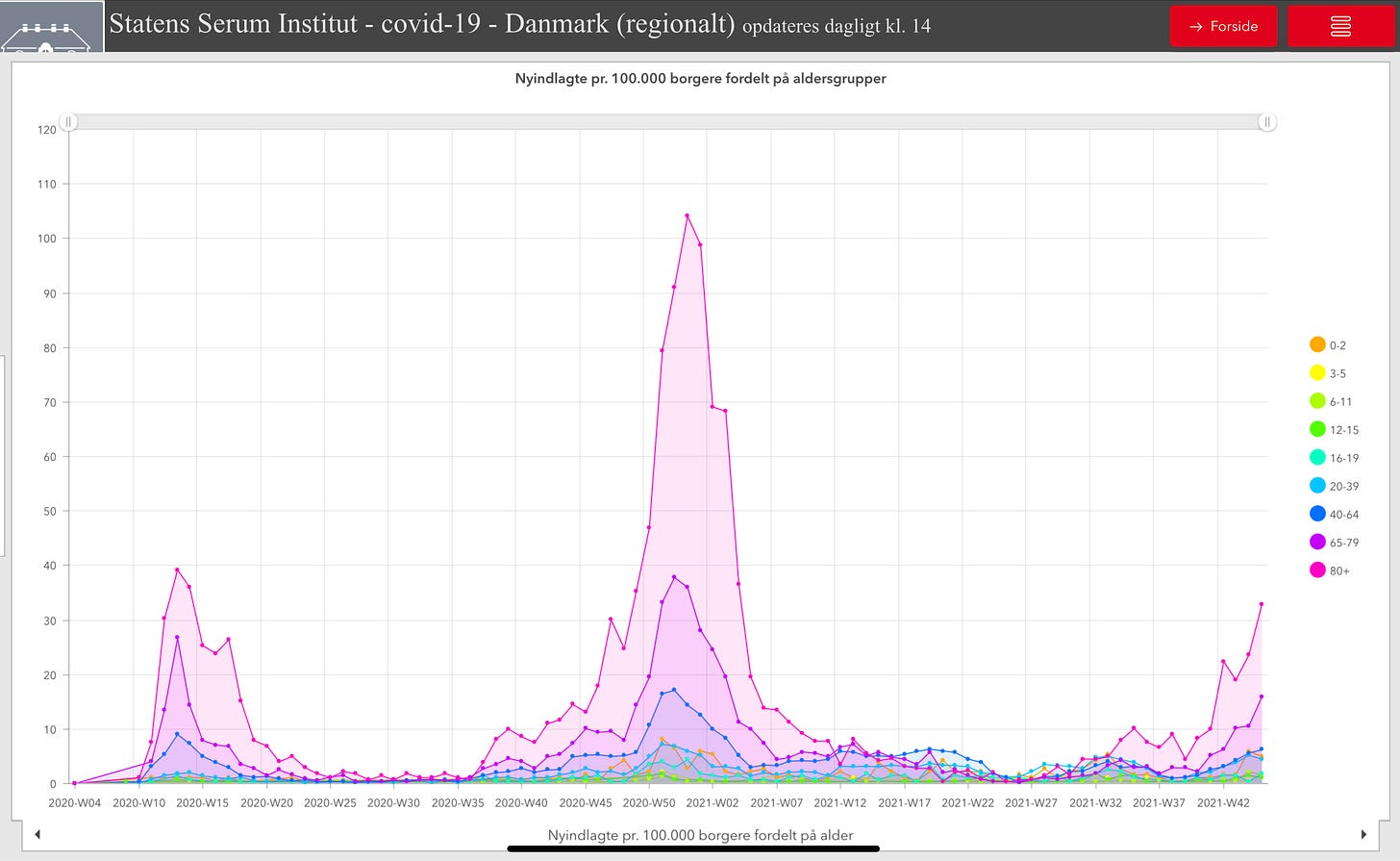
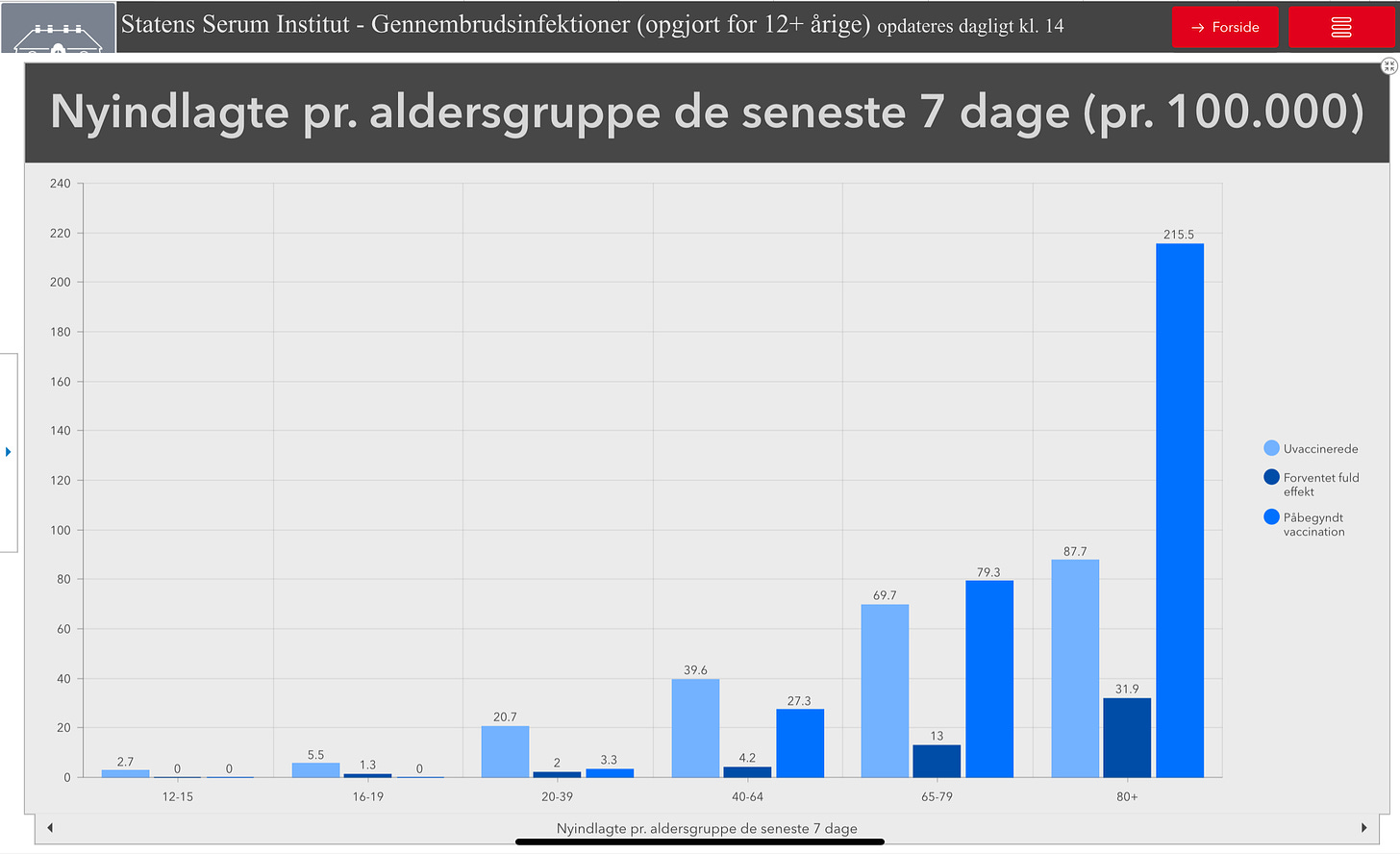
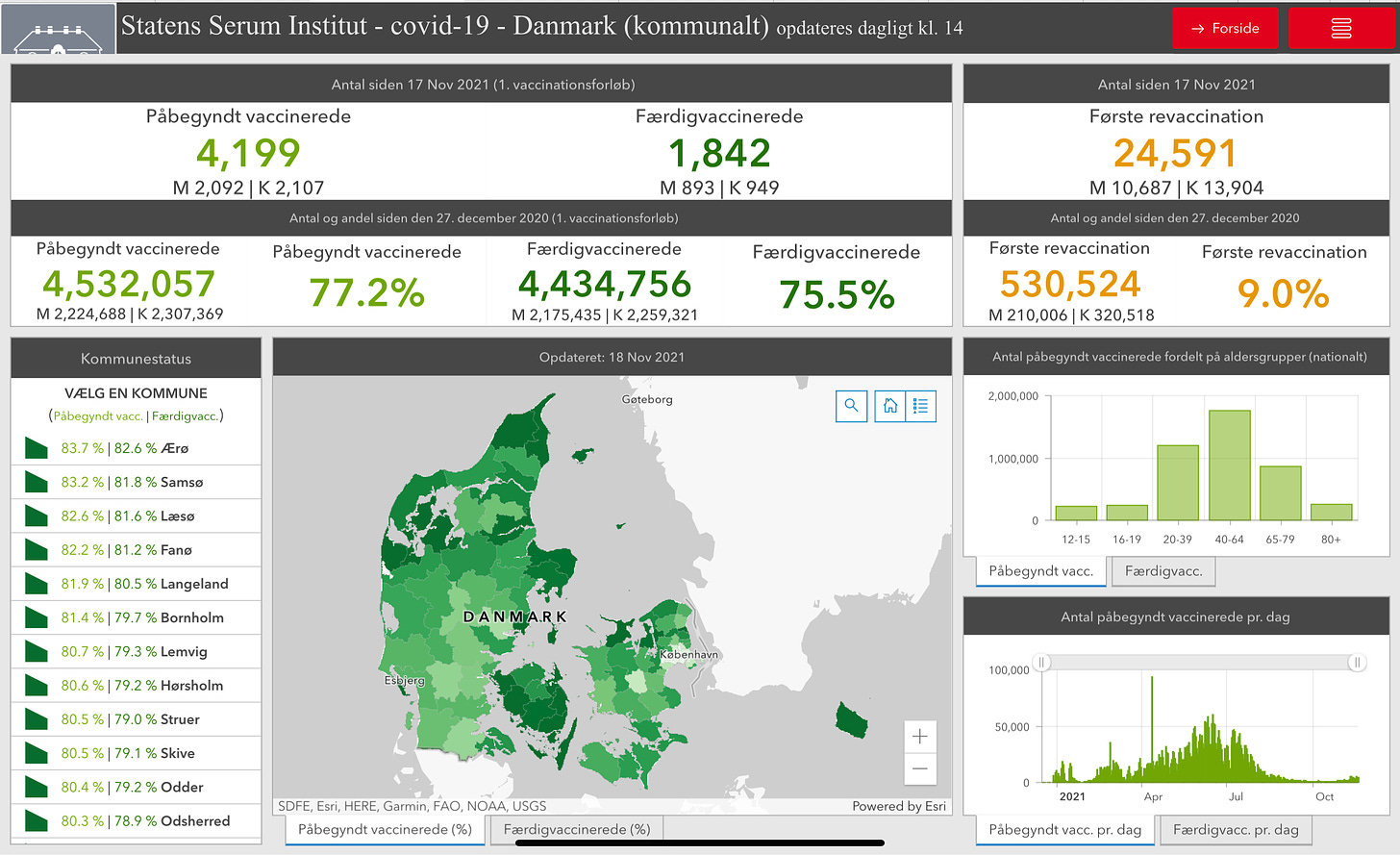
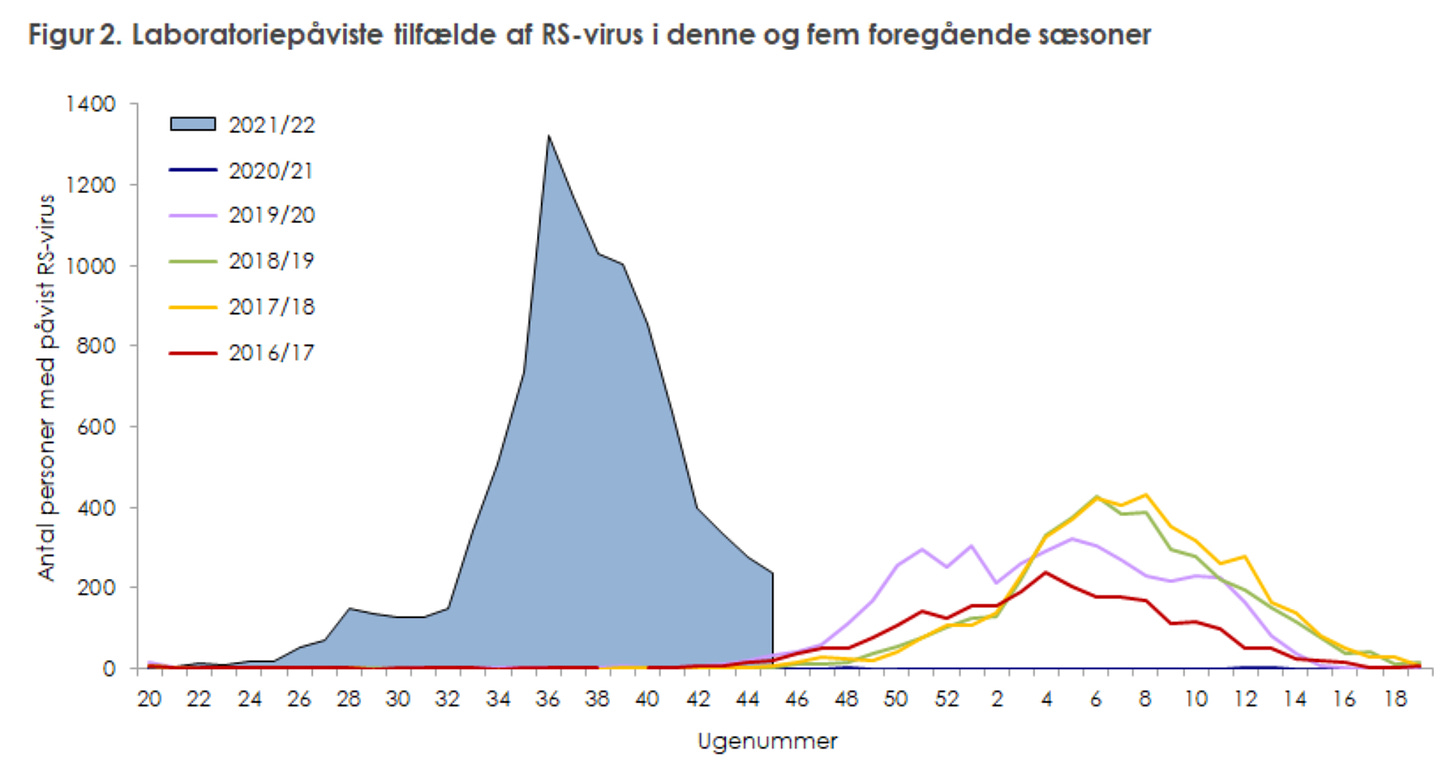
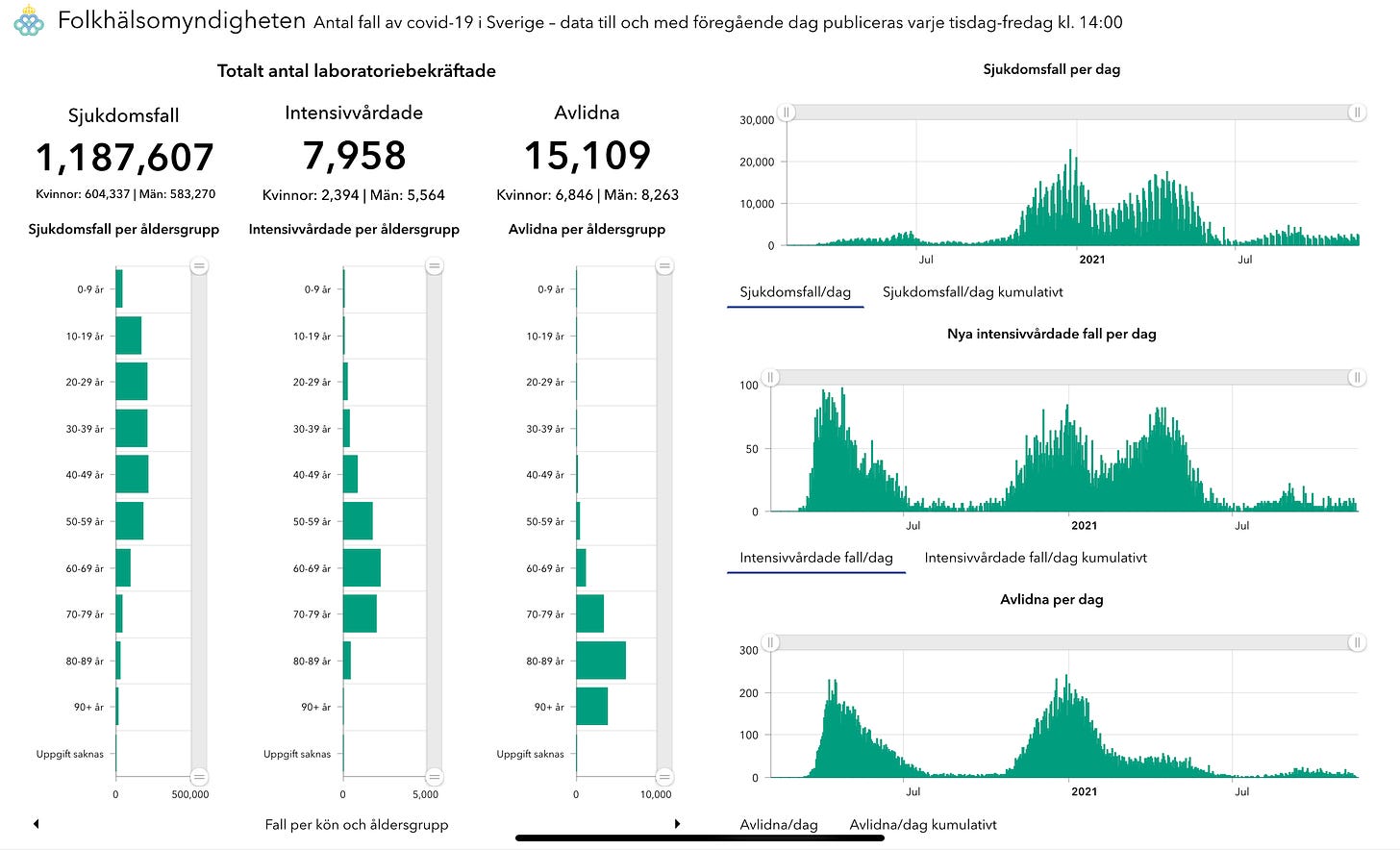
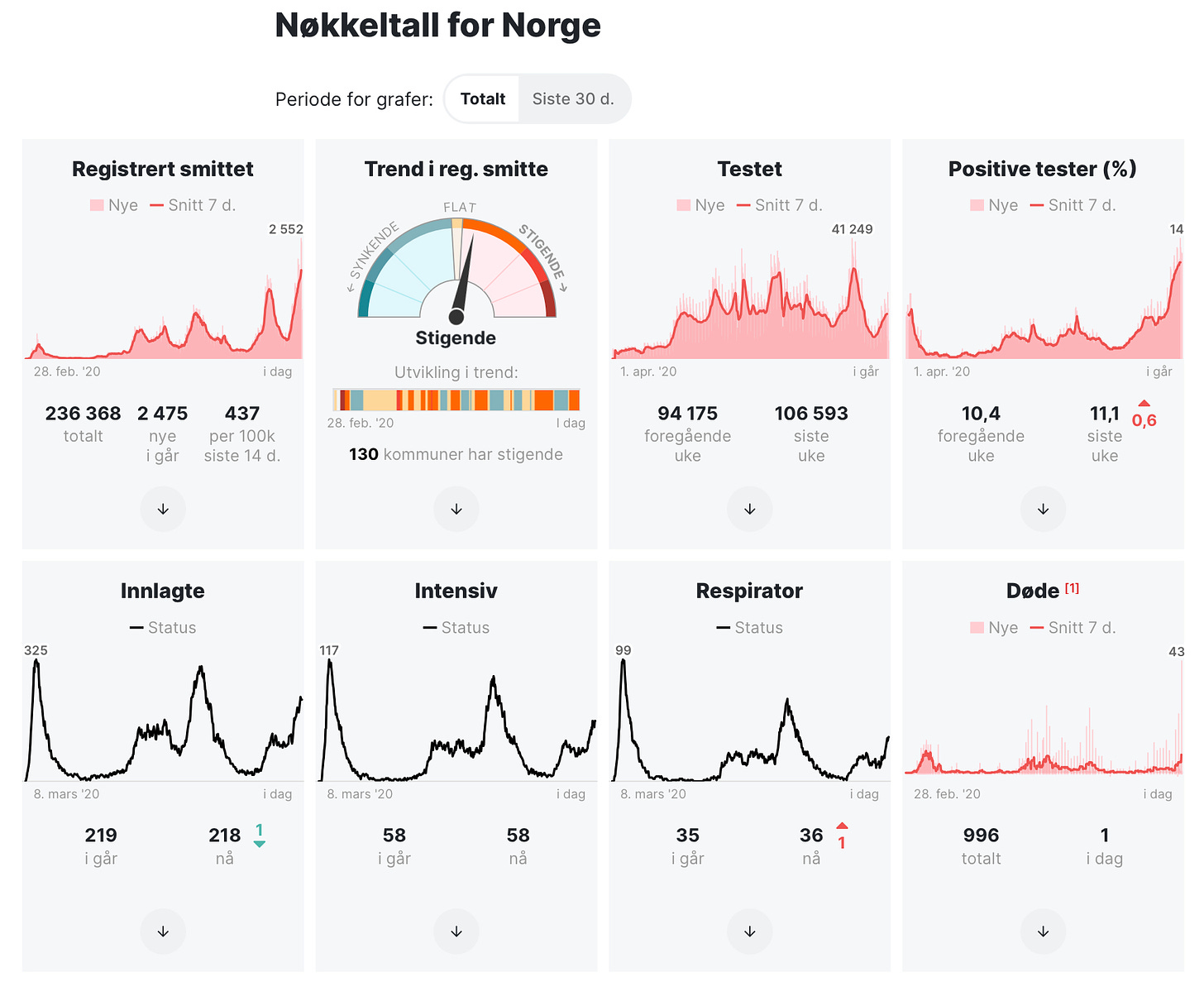
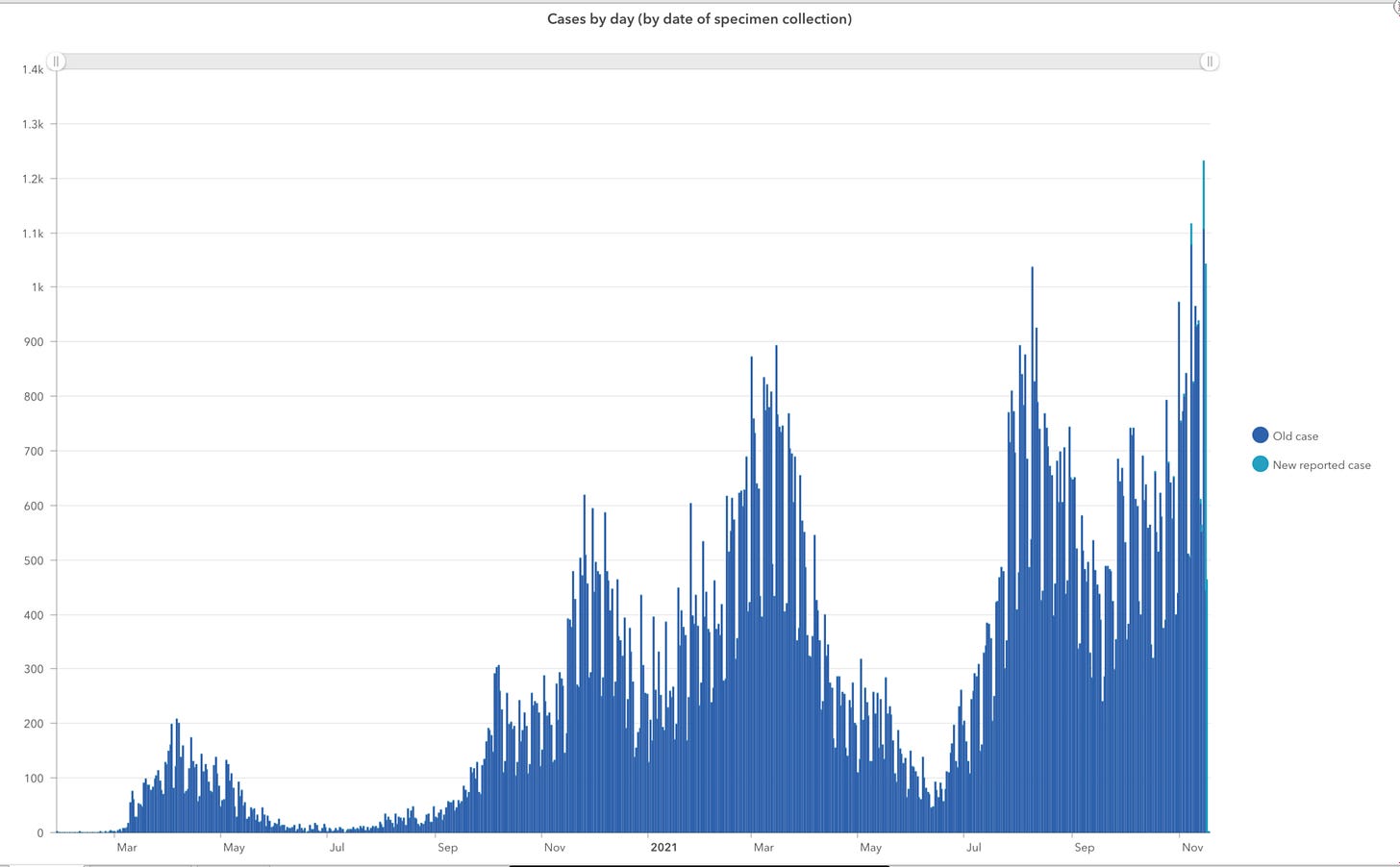
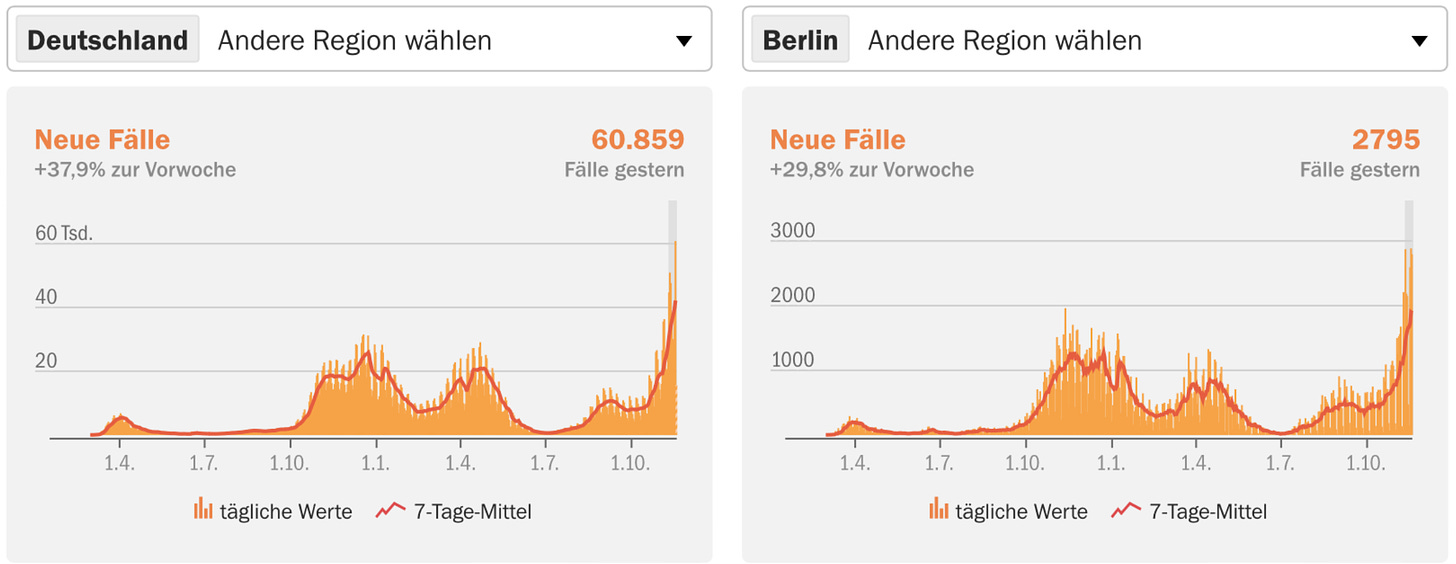
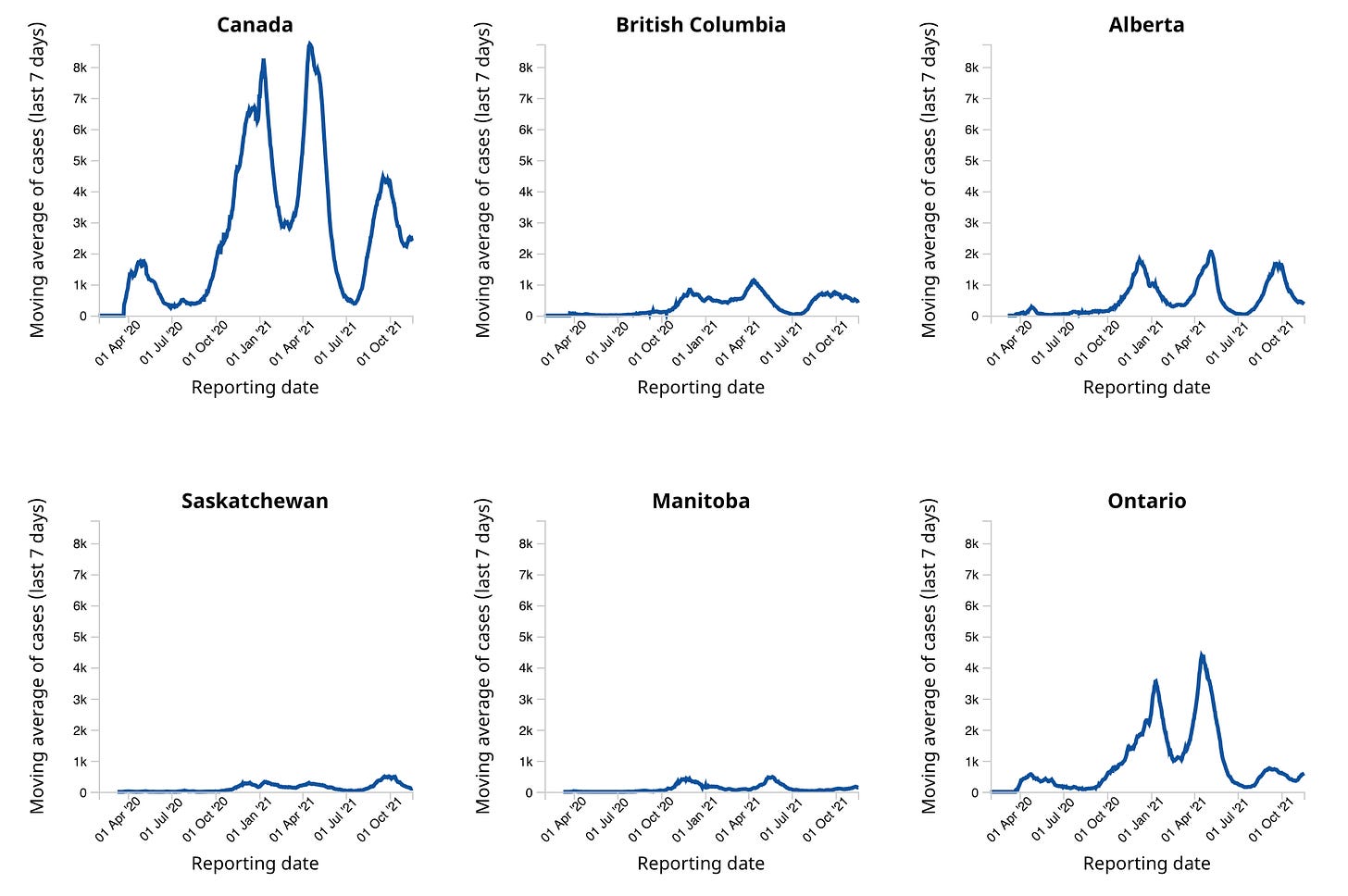
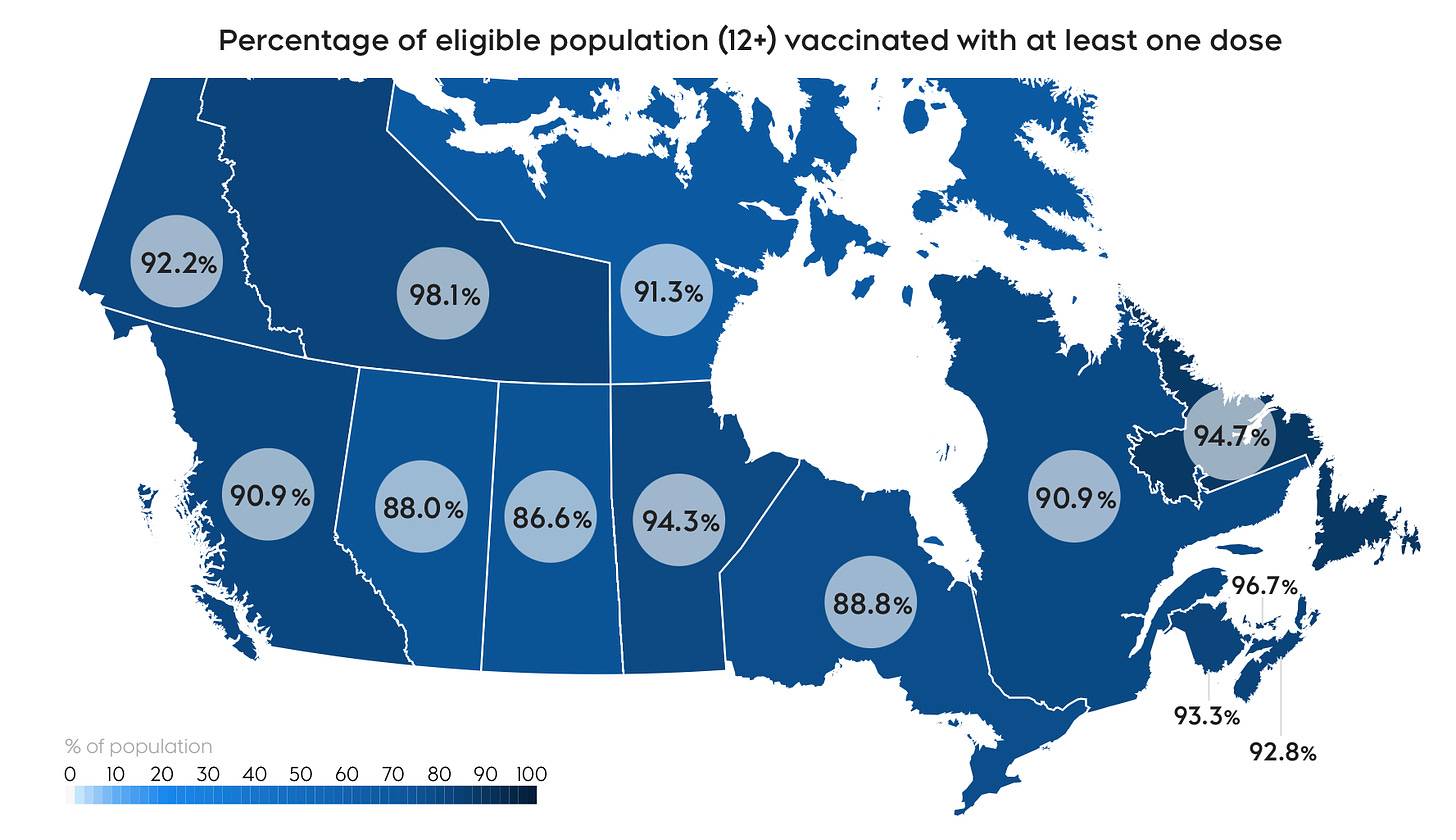
you da man. this is the only report I've read in the past year.